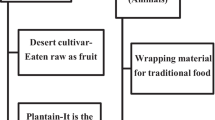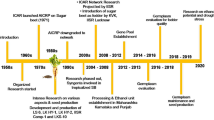Abstract
The decline in the use of fossil fuels in the future is due to the gradual depletion of their reserves and related environmental issues. Biofuels including ethanol are presented as a renewable alternative to fossil fuels. However, ethanol production, generally from sugarcane demands the use of agricultural land and other natural resources, with emphasis on water and other nutrients. Sorghum is tolerant to drought. The purpose of this study was to evaluate the potentiality of eight sweet sorghum cultivars in order to expand the ethanol production to areas with limited supply of water, not suitable for sugarcane which requires irrigation. The cultivars developed by breeding programs in the state of Pernambuco, Brazil, were analyzed for fermentation by industrial strain of Saccharomyces cerevisiae, at 33 °C, under static conditions for a period of 6 h. All assessed parameters showed some statistically significant differences among cultivars (p < 0.01), especially ethanol concentration (P) and the volumetric productivities (Qp) in the following order: Willey (P = 64.77 ± 4.4 g L−1 and Qp = 10.79 ± 0.74 g L−1 h−1), Wray (P = 59.10 ± 1.7 g L−1 and Qp = 9.85 ± 0.28 g L−1 h−1), BR 506 (P = 59.07 ± 1.3 g L−1 and Qp = 9.84 ± 0.21 g L−1 h−1) and SF 15 (54.40 ± 0.4 g L−1 and Qp = 9.07 ± 0.06 g L−1 h−1). The highest potentials for ethanol yield per hectare were observed for the cultivars SF 15 (3142.51 ± 428.47 L ha−1) and BR 506 (2193.95 ± 383.58 L ha−1). Therefore, the cultivars SF 15 and BR 506 seem to be very promising as an energy crop to be produced in areas with environmental conditions similar to Pernambuco.


Similar content being viewed by others
References
Almodares, A., and M.R. Hadi. 2009. Production of bioethanol from sweet sorghum: a review. African Journal of Agricultural Research 4: 772–780.
Amorim, H.V., L.V. Basso, and M.L. Lopes. 2009. Sugar cane juice and molasses, beet molasses and sweet sorghum: composition and usage. In The alcohol textbook, vol. 5, ed. W.M. Ingledew, G.D. Austin, C. Kluhspies, and D.R. Kelsall, 39–46. Nottingham: Nottingham University Press.
Amorim, H.V. 1985. Nutrição mineral da levedura, aspectos teóricos e práticos. In: Semana de fermentação alcoólica “Jaime Rocha de Almeida”, Anais. Piracicaba: ESALQ, 144–148.
Bai, F.W., W.A. Anderson, and M. Moo-Yong. 2008. Ethanol fermentation technologies from sugar and starch feedstocks. Biotechnol Advances 26: 89–105.
Davila-Gomes, F.J., C. Chuck-Hernandez, E. Perez-Carrillo, W.L. Rooney, and S.O. Serna-Saldivar. 2011. Evaluation of bioethanol production from five different varieties of sweet and forage sorghums (Sorghum bicolor (L) Moench). Industrial Crops and Products 33: 611–616.
Dimple, K.K., D.D. Bellmer, R.L. Hunke, M.R. Wilkins, and P.L. Claypool. 2010. Influence of temperature, pH and yeast on in-field production of ethanol from unsterilized sweet sorghum juice. Biomass and Bioenergy 34: 1481–1486.
EMBRAPA—Empresa Brasileira de Pesquisa Agropecuária. Informática Agropecuária. 1999. Manual de análises químicas de solos, plantas e fertilizantes. EMBRAPA, Brasília.
Guigou, M., L.V. Pérez, C. Lareo, M.E. Lluberas, D. Vázquez, and M.D. Ferrari. 2011. Bioethanol production from three sweet sorghum varieties: evaluation of post-harvest treatment on sugar extraction and fermentation. Biomass and Bioenergy 35: 3058–3062.
Jones, R.P., and P.F. Greenfield. 1994. A review of yeast ionic nutrition, I.: growth and fermentative requirements. Process Biochemistry 4: 48–59.
Khongsay, N., L. Laopaiboon, and P. Laopaiboon. 2010. Growth and batch ethanol fermentation of Saccharomyces cerevisiae on sweet sorghum stem juice under normal and very high gravity conditions. Biotechnology 9: 9–16.
Lagunas, R., C. Dominguez, A. Busturia, and M.J. Sáez. 1982. Mechanisms of appearance of the pasteur effect in Saccharomyces cerevisiae: inactivation of sugar transport systems. Journal of Bacteriology 152: 19–25.
Laopaiboon, L., P. Thanonkeo, P. Jaisil, and P. Laopaiboon. 2007. Ethanol production from sweet sorghum juice in batch and fed-batch fermentations by Saccharomyces cerevisiae. World Journal of Microbiology & Biotechnology 23: 1497–1501.
Lima, U.A., E. Aquarone, W. Borzani, and W. Schmidell. 2002. Biotecnologia industrial: processos fermentativos e enzimáticos. São Paulo: Edgard Blucher.
Miller, G.L. 1959. Use of dinitrosalicylic acid reagent for determination of reducing sugar. Analytical Chemistry 31: 426–428.
Murray, S.C., W.L. Rooney, S.E. Mitchell, A. Sharma, P.E. Klein, J.E. Mullet, and S. Kresovich. 2008. Genetic improvement of Sorghum as a biofuel feedstock: II. QTL for stem and leaf structural carbohydrates. Crop Science 48: 2180–2193.
Prasad, S., A. Singh, N. Jain, and H.C. Joshi. 2007. Ethanol production from sweet sorghum syrup for utilization as automotive fuel in India. Energy & Fuels 21: 2415–2420.
Ratnavathi, C.V., K. Suresh, V. Kumar, M. Pallavi, V.V. Komala, and N. Seetharama. 2010. Study on genotypic variation for ethanol production from sweet sorghum juice. Biomass and Bioenergy 34: 947–952.
Reddy, B.V.S., S. Ramesh, P.S. Reddy, B. Ramaiah, P.M. Salimath, and P. Kachapur. 2005. Sweet sorghum–a potential alternate raw material for bio-ethanol and bio-energy. International Sorghum and Millets Newsletter 46: 79–86.
Sánchez, O.J., and C.A. Cardona. 2008. Trends in biotechnological production of fuel ethanol from different feedstocks. Bioresource Technology 99: 5270–5295.
Silva, F.A.S., and C.A.V. Azevedo. 2002. Versão do programa computacional Assistat para o sistema operacional Windows. Revista Brasileira de Produtos Agroindustriais 4: 71–78.
Silva-Filho, E.A., S.K.B. dos Santos, A.M. Resende, J.O.F. Morais, M.A. Morais Júnior, and D.A. Simões. 2005. Yeast population dynamics of industrial fuel-ethanol fermentation process assessed by PCR-Fingerprinting. Antonie van Leeuwenhock 88: 13–23.
Thomas, K.C., S.H. Hynes, and W.M. Ingledew. 1996. Practical and theoretical considerations in the production of high concentration of alcohol by fermentation. Process Biochemistry 31: 321–331.
Thomas, R.L., R.W. Shearrd, and J.R. Moyer. 1967. Comparison of conventional and automated procedures for N, P and K analysis of plant material using a single digestion. Agronomy Journal 59: 240–243.
Tsuchihashi, N., and Y. Goto. 2004. Cultivation of sweet sorghum (Sorghum bicolor (L.) Moench) and determination of its harvest timer to make use as the raw material for fermentation, practiced during rainy season in dry land of Indonesia. Plant Production Science 7: 442–448.
Vasconcelos, J.N. 1987. Influência da complementação de nutrientes nitrogenados e fosfatados sobre o processo de fermentação alcoólica industrial. Brasil Açúcareiro 105: 41–48.
Vasilakoglou, I., K. Dhima, N. Karagianiannidis, and T. Gatsis. 2011. Sweet sorghum productivity for biofuels under increased soil salinity and reduced irrigation. Field Crops Research 120: 38–46.
Walker, G.M. 2004. Metals in yeast fermentation process. Advances in Applied Microbiology 54: 197–229.
Walker, G.M. 2011. Fuel alcohol: current production and future challenges. Journal of the Institute of Brewing 117: 3–22.
Wu, X., S. Staggenborg, J.L. Prophter, and W.L. Rooney. 2010. Features of sweet sorghum juice and their performance in ethanol fermentation. Industrial Crops and Production 31: 164–170.
Zhao, Y.L., A. Dolat, Y. Steinberger, X. Wang, A. Osman, and G.H. Xie. 2009. Biomass yield and changes in chemical composition of sweet sorghum cultivars grown for biofuel. Field Crops Research 111: 55–64.
Acknowledgments
The authors acknowledge the financial support from CNPq (edital 46/2009, processo 551284/2010-2) and Facepe (edital 09/2010, processo APQ 07185-01/10). The Genetech company for the equipment used in the fermentation assays and the Japungú distillery (PB) for making industrial yeast biomass and the gas chromatograph available.
Author information
Authors and Affiliations
Corresponding author
Rights and permissions
About this article
Cite this article
Dutra, E.D., Neto, A.G.B., de Souza, R.B. et al. Ethanol Production from the Stem Juice of Different Sweet Sorghum Cultivars in the State of Pernambuco, Northeast of Brazil. Sugar Tech 15, 316–321 (2013). https://doi.org/10.1007/s12355-013-0240-y
Received:
Accepted:
Published:
Issue Date:
DOI: https://doi.org/10.1007/s12355-013-0240-y




